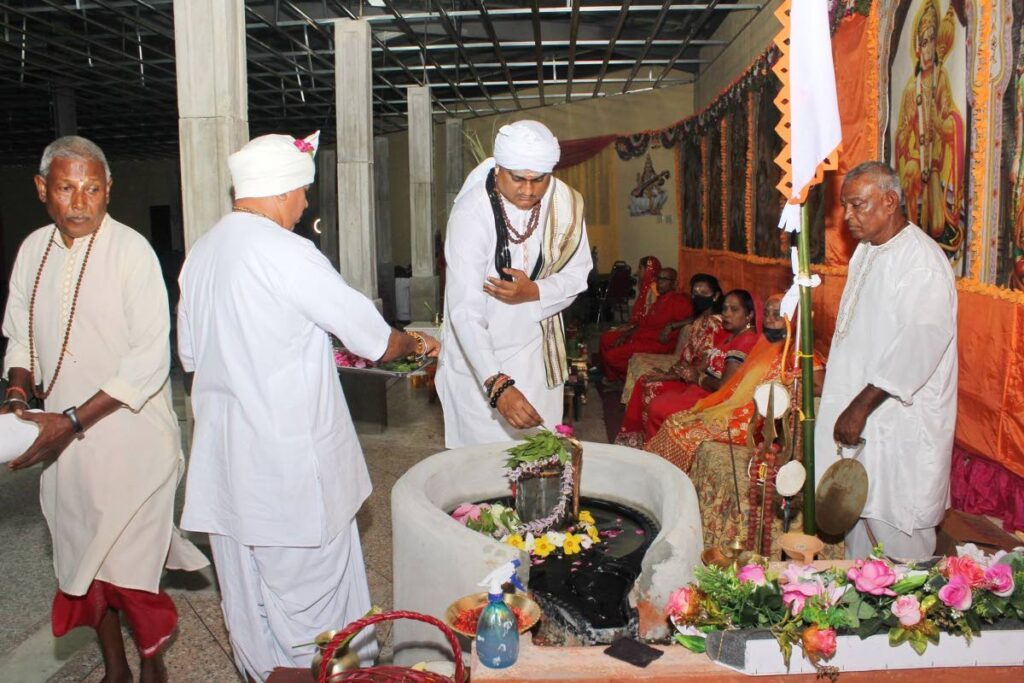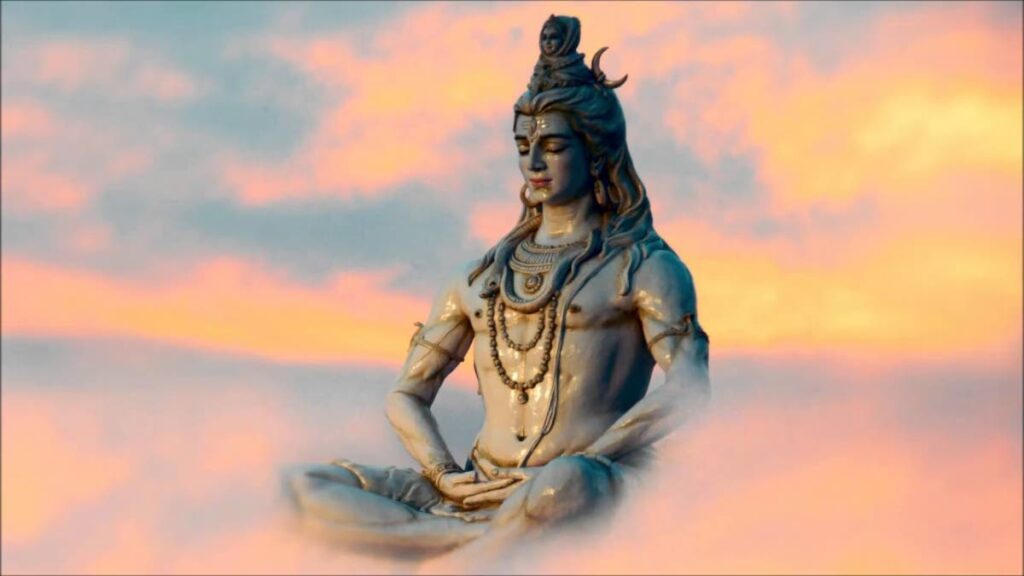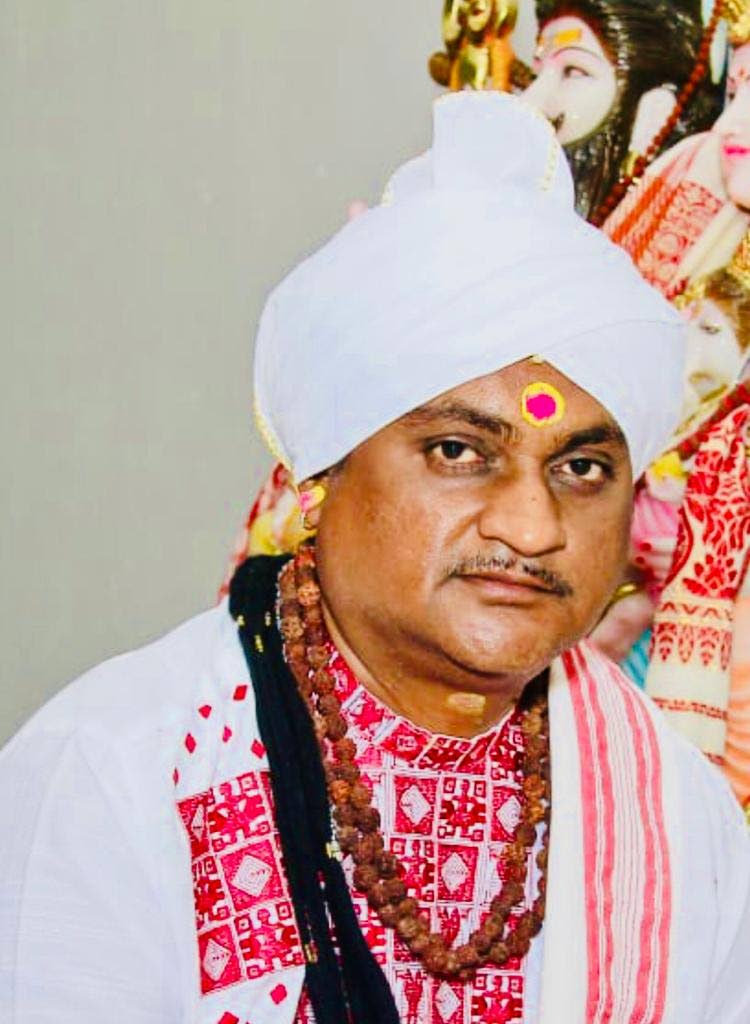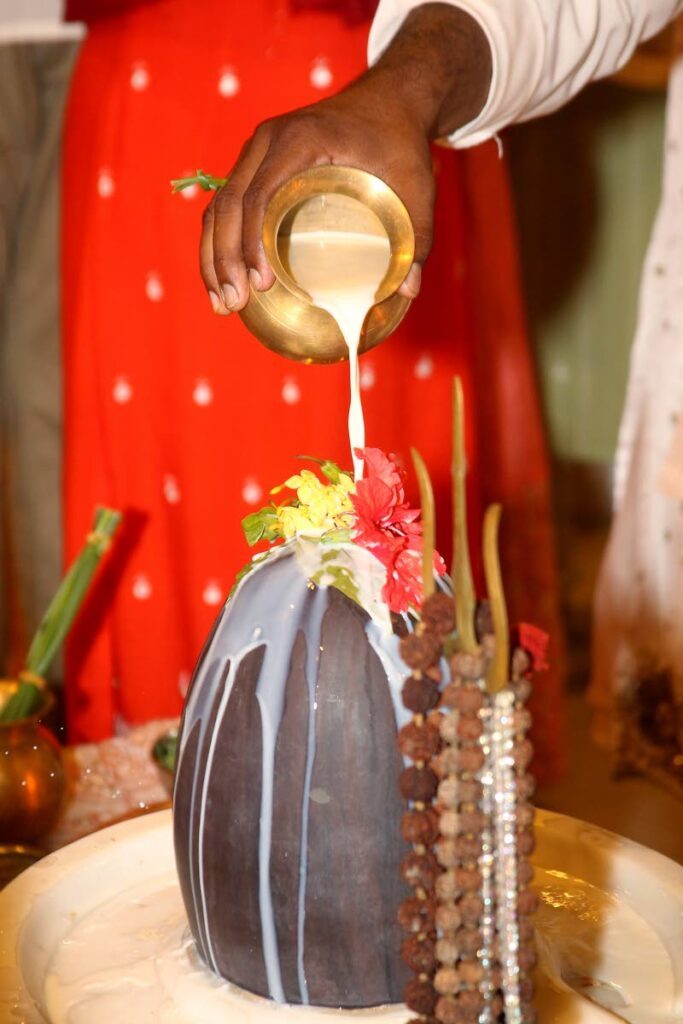Hindus celebrate Shivratri on March 8

BAVINA SOOKDEO
Maha Shivratri will be celebrated by the Hindu community on March 8-9.
Pundit Satyanand Mahabir Dubey, spiritual leader of the Tryambakeshwar Mahadev Mandir, Chaguanas said that Shivratri, literally translating to the "Night of Lord Shiva," holds profound spiritual meaning for devotees.
This sacred night falls on the 14th day of the dark fortnight in the month of Phalgun (February/March), marking the manifestation of Lord Shiva as the Jyotir Lingam (column of light).
"The night of Shiva begins at sunset on the day of Shivratri and ends with the sunrise of the next morning," said Mahabir Dubey.
Shivratri will start at 6.16 pm on March 8 and end 6.16 am on March 9.
Dubey said that Lord Shiva is one of the manifestations of the Hindu Trinity (Brahma, Vishnu and Shiva), embodying the role of the destroyer or rejuvenator.
"Shiva is seen as one who destroys sin or that which obstructs spiritual growth," he clarified, emphasising the transformative aspect of Shiva's role in removing impediments to spiritual evolution.
During this time, Lord Shiva's relevance becomes paramount as devotees engage in introspection and spiritual purification.

Lord Shiva is frequently seen seated in a meditative position. "Sitting in a meditative position represents introspection," said Mahabir Dubey, emphasising the importance of self-reflection and the pursuit of positive transformation through chanting divine names and cultivating positive thoughts.
Furthermore, Lord Shiva symbolises inclusiveness and acceptance without conformity, reflecting the principle of Sanatan Dharma, a way of life rooted in unconditional acceptance and love. "Through Shiva, everything will be purified and brought back to its natural state."
According to Mahabir Dubey, Lord Shiva’s symbolism is as follows:
The maha yogi: Lord Shiva is often depicted in minimalist surroundings, emphasizing his status as a maha yogi, detached from worldly attachments. Lord Shiva's meditative depiction, abstaining from earthly pleasures, teaches the importance of focusing on spiritual pursuits and being prepared for the inevitability of death.

The cobra: The cobra coiled around Lord Shiva’s neck in its striking pose may evoke fear, but it symbolises his dominion over the most perilous creatures. From a philosophical standpoint, the snake represent kal (time), ever present and hovering over humanity.
The linga: Representing the seed of the universe, the linga signifies Shiva's creative power and role in creation, according to Hindu belief.
His hair: Shiva's matted locks, from which flows the sacred river Ganga, symbolise purity and the power to cleanse sins for those who seek his grace.
The moon: Adorning his hair, the two-day-old moon symbolises the tranquillity and peacefulness associated with Lord Shiva.
Rudraksha mala: Around his neck hangs the rudraksha mala, a string of 108 beads symbolising repetition of the sacred mantra Om Namah Shivaya.
The trishul: Lord Shiva's trishul, with its three prongs representing the past, present, and future, signifies his mastery over time and the universe.
Ashes: His body adorned with ashes, or bhasma, symbolises permanence and the transcendence of earthly desires, as well as the cycle of life and death.

His colour: Lord Shiva is often depicted with a blue face or throat, symbolising his role as the one who drank the poison halahal to save the world, earning him the epithet Neelkantha or "blue-throated one."
The third eye: Shiva's third eye represents wisdom, foresight, and untamed energy, while the
tilak on his forehead encourages devotees to focus on their inner spiritual eye. The three horizontal lines of ash symbolise his power and wealth, while the trident represents the functions of the Hindu Trinity.
At the temple, devotees will partake in a series of spiritual activities during the Shivratri night vigil, including recitations from the Shiv Mahapuran, bhajans, jaap (recitation of sacred mantras), and havan (sacred fire ceremony).
For those celebrating at home, the following simple offerings can be made:
1st prahar (or part of the night) – milk
2nd prahar – dahee
3rd prahar – ghee
4th prahar – honey
If one is unable to do offerings throughout the night (for all four prahars) one can do a
pakka dhar or combined offering by mixing all items together with till, bael leaves, white rice and a piece of sugar cane.
The symbolism of these offerings, according to Mahabir Dubey are as follows:
Milk – is for prosperity in life and to get rid of all health-related issues and diseases.
Dahee – is for prosperity, beauty and luxuries in one’s life.
Ghee – is to have improved concentration, memory and to give you power and confidence in your divine pursuit.
Honey – is for happiness and to remove all enemies in life.
Bael leaves – represents prosperity and a long and healthy life. The three personifications – Brahma, Vishnu and Mahesh are said to be part of the bael.
Sugarcane – represents sacrifice. As Mahabir Dubey stated, “To create sugar, the sugarcane goes through a harsh process, yet it endures and brings forth divine outcomes.”
Till – is for the purity of selfness devotion to God.
Mahabir Dubey in his Shivratri message said, "We must try to be like Bhagvan Shiva – in the midst of chaos we must keep our minds controlled, we must not react spontaneously without thinking – he represents control of the senses. Lord Shiva personifies peace and love and unconditional acceptance and for us to be like him, we must follow these principles. This will bring unity, peace and love in our lives and by extension economic progress."


Comments
"Hindus celebrate Shivratri on March 8"